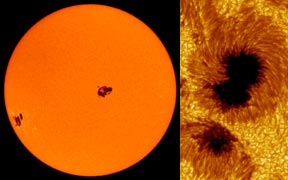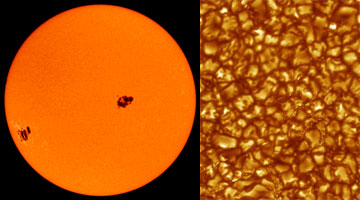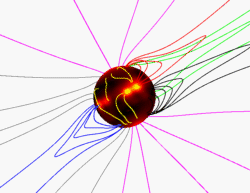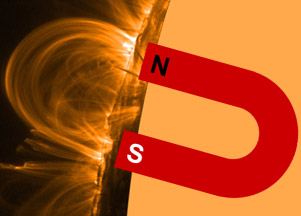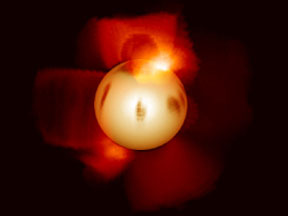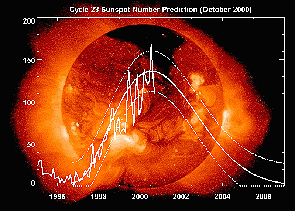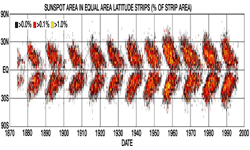Click on image for full size
Images courtesy SOHO (NASA & ESA) and the Royal Swedish Academy of Sciences.
Related links:
History of Sunspot Observations
Movie: Journey Beneath a Sunspot
Do Changes in Sunspot Numbers Affect Weather and Climate on Earth?
Animation: Rotating Sun with Sunspots
Activity: Graphing Sunspot Cycles
Activity: Tracking the Motion of an Active Sunspot Region
Activity: Plotting Locations of Active Regions on the Sun
Movie: Supercomputer Models Help Scientists Understand Sunspots
When Nature Strikes: Space Weather
When Nature Strikes: You Be the Solar Scientist! Classroom Activity
Sunspots
Sunspots are dark, planet-sized regions that appear on the "surface" of the Sun. Sunspots are "dark" because they are colder than the areas around them. A large sunspot might have a temperature of about 4,000 K (about 3,700° C or 6,700° F). This is much lower than the 5,800 K (about 5,500° C or 10,000° F) temperature of the bright photosphere that surrounds the sunspots.
Sunspots are only dark in contrast to the bright face of the Sun. If you could cut an average sunspot out of the Sun and place it in the night sky, it would be about as bright as a full moon. Sunspots have a lighter outer section called the penumbra, and a darker middle region named the umbra.
Sunspots are caused by the Sun's magnetic field welling up to the photosphere, the Sun's visible "surface". The powerful magnetic fields around sunspots produce active regions on the Sun, which often lead to solar flares and Coronal Mass Ejections (CMEs). The solar activity of flares and CMEs are called "solar storms".
Sunspots form over periods lasting from days to weeks, and can last for weeks or even months. The average number of spots that can be seen on the face of the Sun is not always the same, but goes up and down in a cycle. Historical records of sunspot counts show that this sunspot cycle has an average period of about eleven years.
Our Sun isn't the only star with spots. Just recently, astronomers have been able to detect "starspots" - "sunspots" on other stars.


